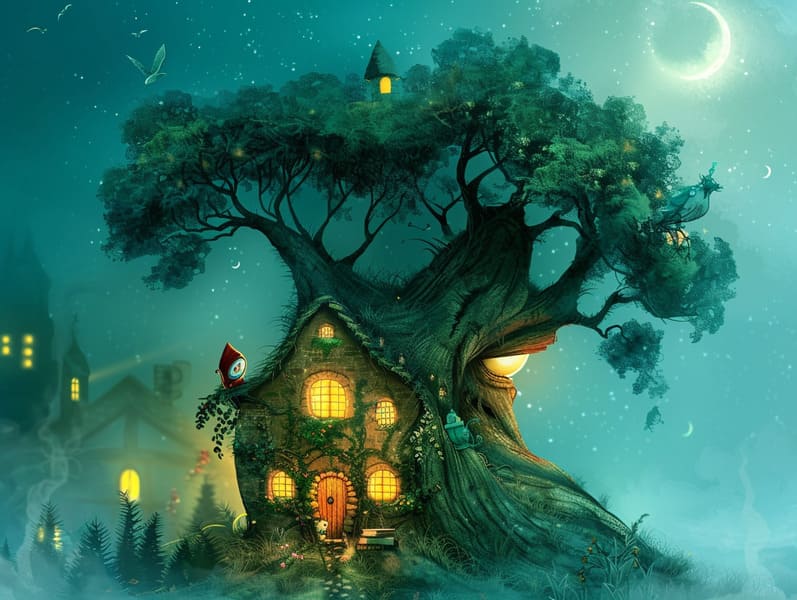The Evolution of Mythical Fairy Tales and the Enduring Wonder.
The Evolution of Mythical Fairy Tales and the Enduring Wonder.
Blog Article

Grimm's fairy tales have legendary status. These narratives have been narrated from one generation to the next millennia before they were ever put on paper. They originated from a variety of societies, including Middle Eastern traditions. They were initially told among mature audiences, often carrying themes and messages relevant to the societal norms and beliefs of the time.
Jacob and Wilhelm Grimm, Jacob and Wilhelm Grimm, were among the first to compile many of these beloved fairy tales. Their anthology, "Grimm's Fables," included stories like "Ashenputtel," "Hansel and Grethel," and "The True Story of Snow White," which have since become staples in the world of children's fairy tales. Similarly, H. C. Andersen's enchanting narratives, such as "The Mermaid's Tale," and "The Story of the Ugly Duckling," have captivated hearts worldwide, establishing their place in the pantheon of timeless fairy tales.
Though they are old, these stories remain as applicable as ever, especially as bedtime stories for kids. These magical stories are now available in multiple formats, including artistically illustrated books, whimsical animations, and free fairy tales online.
Their lasting appeal can be ascribed to several delightful features:
Key Lessons: Ancient fairy tales often impart important moral lessons. Fairy tales like "The Shepherd Boy and the Wolf" teach the benefit of integrity, while "The Hare and the Tortoise" stress the benefits of persistence and unpretentiousness. These stories offer the young clear distinctions between virtue and vice, developing their moral compass in a mild yet profound way.
Empathy and Awareness: Classic fairy tales frequently feature heroes facing trials and tribulations, stimulating young readers to understand with their struggles and back their triumphs. For instance, "The Tale of Beauty and the Beast" conveys the virtue of seeing beyond looks to see the true character of a person, encouraging warmth and recognition.
Cultural Understanding: Many old fairy tales are deeply embedded in the cultural contexts from which they sprang. Engaging with these narratives can provide delightful insights into different beliefs, nurturing a sense of world awareness and acknowledgment.
Inventiveness and Imagination: The supernatural elements in timeless fairy tales—magical beings—unleash children’s creative minds. These narratives transport readers to otherworldly realms, revitalizing innovative dreams and a sense of awe that endures a lifetime.
Ancient fairy tales are not only magical but also educational. They work as delightful tools in advancing various mental and emotional abilities in children. When ancient fairy tales are voiced, they advance speech development by teaching new linguistic elements and sophisticated sentence structures. This practice also fosters hearing abilities and attentiveness, as children stay focused, keen to see what happens next.
Furthermore, contemplating the themes and characters of timeless fairy tales Grimm's fairy tales collection can improve problem-solving abilities and critical thinking. Young ones are guided to detect patterns, forecast, and get cause and effect. These explorations also encourage the young express their thoughts and feelings, cultivating their emotional intelligence.
In today’s digital age, the existence of web-based fairy tales has made these narratives more available than ever. Internet sites and digital apps offer large libraries of timeless fairy tales that can be browsed or played anytime, anywhere. Fairy tales read out loud are particularly widespread, providing an captivating way for the young to enjoy these enchanting tales. Voice books and read-aloud videos lead characters and settings to life, often accompanied by spellbinding harmonies and instrumentals that raise the storytelling experience.
The timeless fascination of classic fairy tales lies in their ability to evolve to current eras while retaining their main lessons. Contemporary takes of these fairy tales often spotlight more inclusive protagonists and modern settings, making them understandable to today’s audience. However, the main ideas of bravery, understanding, and equity remain unchanged, continuing to move children of all ages.
Traditional fairy tales also offer a sense of reassurance and recognition. They impart upon a methodical narrative with a clear beginning, middle, and end, often winding up with the termination of conflicts and the triumph of morality over wickedness. This assuredness can be relieving for children, furnishing a sense of firmness in an fluid world.
Old fairy tales continue to delight and inform new generations, maintaining their attraction and significance in modern society. As nighttime stories for kids, they furnish a perfect blend of magic and knowledge, advancing moral values, empathy, and creativity. The presence of web-based fairy tales and the well-received status of fairy tales read out loud certify that these traditional stories remain accessible to new generations.
By defending and spreading these stories, we continue to revere the rich tapestry of myths and cultural heritage. Whether you are seeing a vibrantly illustrated book, browsing a digital library, or listening on an spoken story, the captivation of classic fairy tales is always within reach. These narratives point out of the consistent impact of tales and its ability to bind us across centuries and lands.
Whether you are browsing a vividly illustrated book, discovering a electronic collection, or listening on an audio story, the magic of old fairy tales is always within reach.
These stories teach us of the perpetual spell of fairy tales and its ability to link us across epochs and places, forging a link that enchants and educates alike.